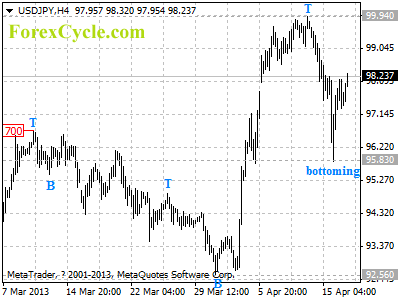By Bill Bonner
We are delighted to see gold getting smacked down. From the International Business Times:
Gold prices posted their biggest
two-session drop in 30 years Monday as retail investors and large
institutional speculators capitulated to a six-month downdraft that
accelerated in the last week into bear market territory. The violence of
Monday’s plunge reinforced the view that the 12-year bull market in
gold is finished.
In New York trading, a troy ounce of gold closed at $1,360.60, a more than 9% plunge and the most extreme drop since 1983.
By the close of trading Monday, the
price was off more than 13%, or more than $200 per ounce, from last
Thursday’s closing price of $1,564.90.
Why is this good news? It settles our nerves. And gives us an opportunity to buy more.
If you’re in a card game and you look around the table… if you
can’t figure out who the fool is, he might be you. Then you get nervous.
You start rubbing your hands or scratching your forehead. The other
players will see that you’ve lost your nerve.
Then you’re finished…
We’ve been looking around the table of the investment world, too, wondering who’s the fool. The people who are buying stocks? Probably, but maybe not. The folks who are buying bonds? Yes. But who knows?
Then who is it? Are we the fools?
A lot of people think so. It was beginning to make us nervous.
Maybe there really is a recovery… however weak. Maybe the feds
really do have the situation under control. Maybe the central banks are
right to print money. Maybe it will be clear sailing from now until
kingdom come. And we’ll be fools not to be on the boat along with all
the other stock buyers and gold dumpers.
Why is the price of gold falling? The papers say it’s because
speculators fear that China is slowing… or that Cyprus will dump its
holdings. From British newspaper The Guardian:
The price of gold
fell to its lowest level in more than 18 months on Friday night amid
fears that sales of the precious metal forced on Cyprus by its desperate
financial plight would lead to wholesale dumping by hard-pressed
countries in the coming months.
At the end of a week dominated by the
plight of the troubled Mediterranean island, gold slid below $1,500 per
ounce for the first time since July 2011 in anticipation that Cyprus
would seek to raise 400 million euro by offloading a chunk of its
reserves.
The False Premise
“Find the trend whose premise is false,” says George Soros, “and bet against it.”
And today, behind the drop in the gold price
is a very foolish notion. The premise is that real money (financial
reserves) can be replaced by credit and debt. People who believe this
must be the real fools in the market. Which takes some of the pressure
off us.
Imagine you are a major holder of, say, antique Buicks. Imagine you
are in financial trouble. The market for antique Buicks anticipates the
upcoming supply. Prices of old Buicks drop.
OK… but are Buicks the same as gold?
Imagine that, instead of Buicks, you held cash — a big wad of cash
in your vault. Then, in financial trouble, you need to open the vault,
get out your cash and use it to pay your creditors. Does the market for
cash go down? Does the value of your cash decline because people know
you will have to give it to someone else?
The premise is false. Real cash does not become less valuable when
people find themselves in financial difficulty; it becomes more
valuable. People scramble to get it. They need to pay their debts…
settle their accounts… reduce their illiquidity by raising cash. They
need cash. The demand for cash goes up, not down.
But wait. Today’s bills are payable in paper cash… not gold.
Debtors must raise paper cash by selling their gold for paper. It’s
paper they need… not real money.
That’s what makes this business so interesting, isn’t it? And so
funny. The system runs on paper money. People spend it. People borrow
it. Now people need more of it to pay their bills. So they sell their
valuables — namely, gold — to get more paper money. Gold goes down,
while central banks print up more paper money — just to make sure
there’s plenty to go around.
But one day… and we won’t say when… (saying “what” seems like
more than enough to ask from a free publication)… people will stop
worrying about the quantity of the paper and begin worrying about the
quality of it.
They will find that they have plenty of paper… and that more is
coming all the time. They will look in their vaults and wonder what they
will do with all this paper money.
They will have bills to pay then too… and creditors with sharper
eyes and tougher standards. When they offer these new creditors more of
their paper money, they will say, “Uh-uh.”
They’ll want some better cash. Gold, in other words.
Regards,

Bill
To learn more about Bill visit his Google+ page or Bill Bonner’s Diary


